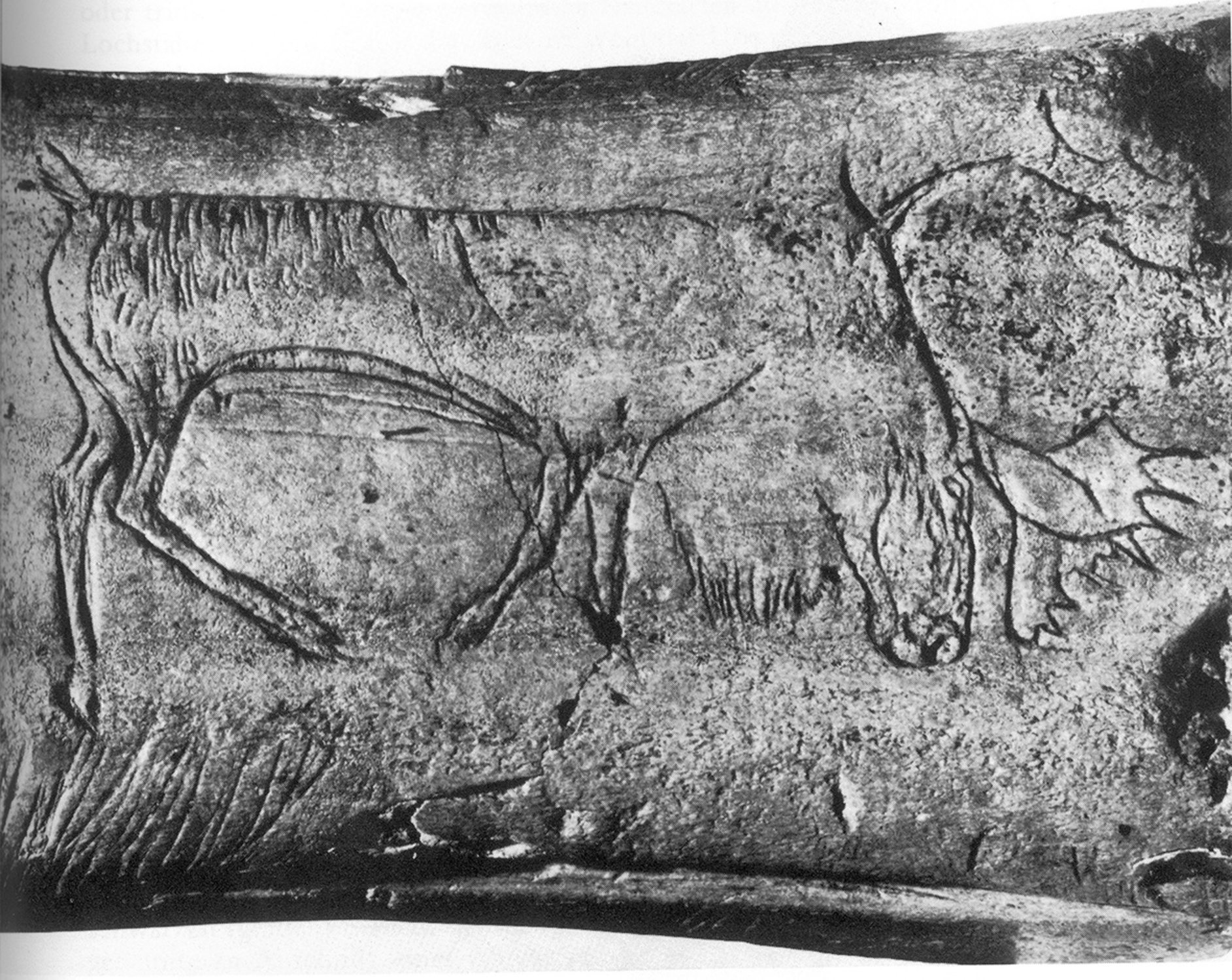
- Home
- More insights into the Magdalenian way of life
- The Magdalenian in Switzerland
- Living in a treeless landscape
Using the remains of plants, insects and molluscs accumulated over time in sediments in the lakes and marshes scattered across the Swiss territory, it is possible to retrace the evolution of vegetation and the climate since the beginning of the retreat of the glaciers in the Swiss plateau (the geographical area located between the Alps and the Jura) from approximately 20,000 years ago until today.
An open environment of steppe tundra
On the land that was uncovered after the melting of the ice sheets, steppe tundra vegetation gradually developed and was sufficient to nourish herds of reindeer, horses and bison. In July, the average temperature in this cold, dry climate was 10°C, while in January the average temperature dropped to -20°C. Traces of occupation by Magdalenian populations have been found on approximately 40 sites. The Magdalenians quickly occupied all the zones at low altitude, where they set up camps in the open air and in caves and rock shelters.
Magdalenian hearths reveal significant constraints
The only ligneous combustibles available for making fire were the branches of creeping willows and dwarf birches. Hearths were made using pebbles and large sheets of gneiss, which stored up heat during the brief phase of combustion of twigs. Thanks to its closed-combustion design, the hearth could be used for considerably longer once the fire was extinguished, and used to cook meat or for other technological activities requiring a source of heat.


